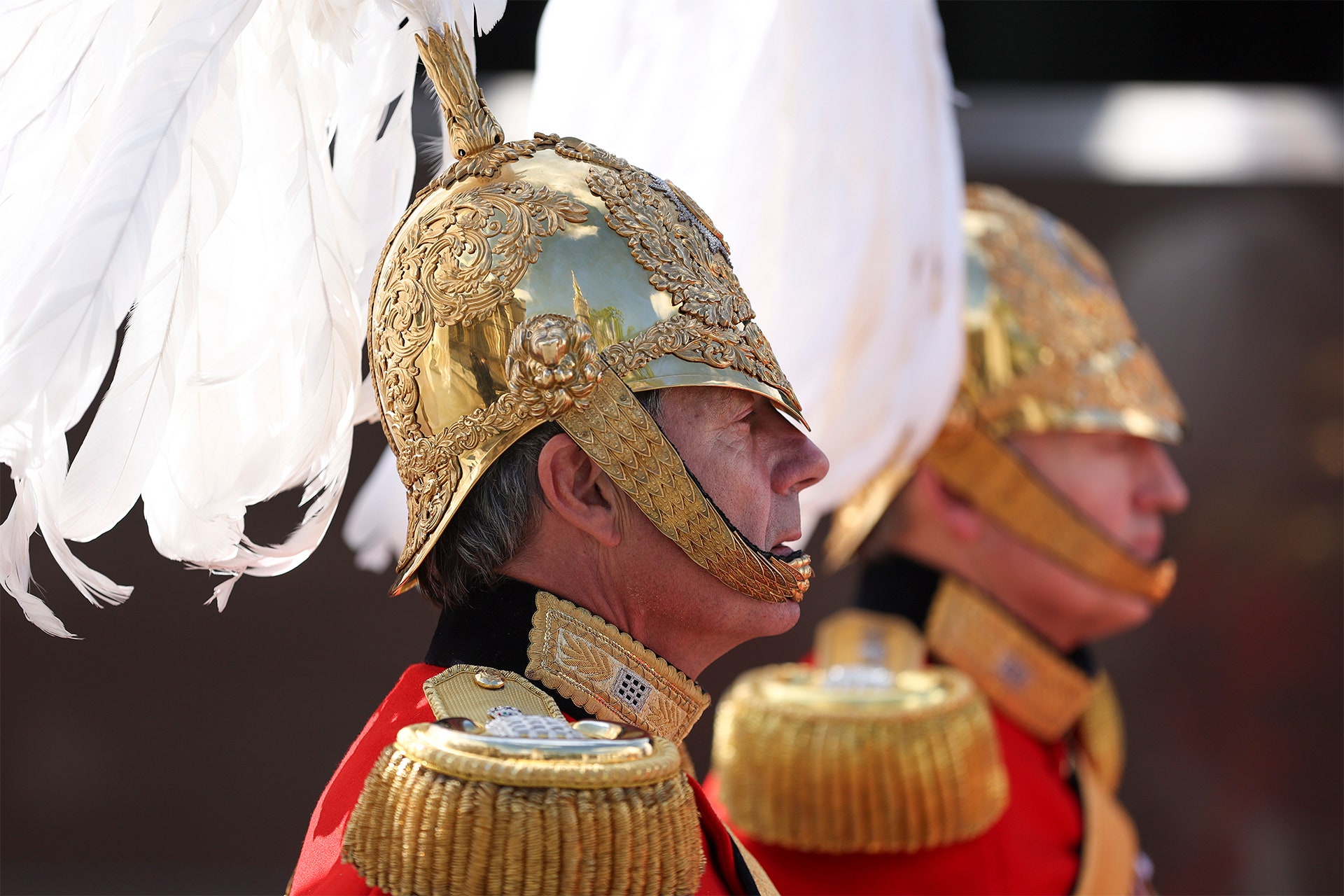
Guards officers wear special, taller bearskins taken from a different part of the bear, which are apparently in short supply. Bearskins originate from the cloth caps worn by the original grenadiers in European armies during the 17th century, when their headgear was trimmed with fur. Made from the fur of the Canadian black bear, the British Army purchased hats from British hatmakers. British hatmakers reportedly purchase between 50 and 100 black bear skins each year at a cost of about £650 each.
There are two different colours of sash for officers: one is crimson with white sword loops which attach onto the sword, and the other is crimson and gold with gold loops, which are worn only when members of the Royal Family are in attendance.
Members of the Household Cavalry wear shiny silver Albert helmets (introduced to the military by Queen Victoria’s husband, Prince Albert) and have a rich selection of four or five kinds of uniforms – and they have to purchase them themselves at a cost of up to £10,000. In contrast, the Light Dragoons only need to buy two. ‘Anything that’s worth a lot of money, including bearskins, crossbelts, breastplates, is often passed down from generation to generation,’ says a former officer.
BLUES AND ROYALS OF THE THE HOUSEHOLD CAVALRY, DURING THE CEREMONIAL PROCESSION FROM BUCKINGHAM PALACE TO WESTMINSTER HALL
Anadolu Agency/Getty Images
Where are they made and kept?
Herbert and Johnson is responsible for making the ‘beautiful headdresses’ – nearly every regiment patronises the store for dress caps, khaki caps and berets. Gieves & Hawkes on Saville Row is responsible for embroidering intricate gold onto the uniforms. Officers buy their uniforms from Quarter Master stores around the country, run by a Quarter Master or ‘QM’. ‘It’s like Aladdin’s cave, it’s extraordinary, it really is’, says a former officer.

